SWIFT is an international messaging network used by German banks and other financial institutions in Germany to exchange sensitive payment information for transactions in Germany. The SWIFT system uses a standard system of codes to transfer money from one country to another including Germany. Each German SWIFT member bank in Germany is assigned a unique code, which is usually eight or 11 characters long. These codes can be found online at the website of each German bank. You can also look up your bank's German SWIFT code on the main SWIFT website available in Germany.
German SWIFT transfers can be made in almost any currency including EUR. You will need the German SWIFT code of the bank of the recipient in Germany. Then, you can enter your bank's German SWIFT code and send money. The money will arrive at its destination from Germany in the currency of your choice. You can then check the status of the transfer at any time online with your German SWIFT service provider.
 Visit XE Money Transfer
Visit XE Money Transfer
Used By: 280000000
Currencies Available: 76
Transfer Fees: none
Payment Methods: Bank transfer, credit card, debit card
iOS App : yes, Android App : yes
LiveChat:
Min Transfer: US$1.00
Max Transfer: US$500,000.00 (or equivalent)
Year Founded: 1993
 Visit Wise Multi-Currency Account
Visit Wise Multi-Currency Account
Used By: 11000000
Currencies Available: 54
Transfer Fees: 0.5%-1%
Payment Methods: Bank transfer, debit card, credit card, SOFORT transfer
iOS App : yes, Android App : yes
LiveChat:
Min Transfer: 1 USD
Max Transfer: 1000000 USD/transaction/day (personal), 3000000 USD/transaction/day (business)
Year Founded: 2011
 Visit Remitly
Visit Remitly
Used By: 3000000
Currencies Available: 63
Transfer Fees: 0-3.99$
Payment Methods: Bank transfer, credit/debit card
iOS App : yes, Android App : yes
LiveChat:
Min Transfer: US$1.00
Max Transfer: US$20,000.00
Year Founded: 2011
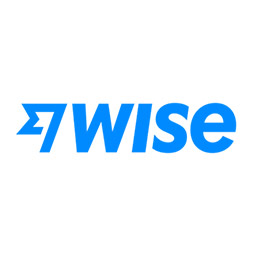 Visit Wise Business
Visit Wise Business
Used By: 11000000
Currencies Available: 55
Transfer Fees: 0.5%-1%
Payment Methods: Bank transfer, debit card, credit card, SOFORT transfer
iOS App : yes, Android App : yes
LiveChat:
Min Transfer: 1 USD
Max Transfer: 1000000 USD/transaction/day (personal), 3000000 USD/transaction/day (business)
Year Founded: 2011
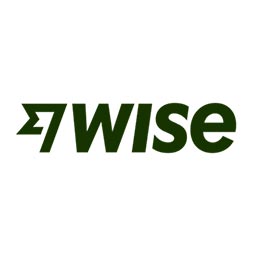 Visit Wise
Visit Wise
Used By: 11000000
Currencies Available: 54
Transfer Fees: 0.5%-1%
Payment Methods: Bank transfer, debit card, credit card, SOFORT transfer
iOS App : yes, Android App : yes
LiveChat:
Min Transfer: US$1.00
Max Transfer: US$1,000,000 (varies based on currency)
Year Founded: 2011
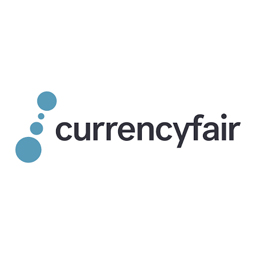 Visit CurrencyFair
Visit CurrencyFair
Used By: 150,000
Currencies Available: 17
Transfer Fees: 0.45%
Payment Methods: Bank transfer, debit card
iOS App : yes, Android App : yes
LiveChat: yes
Min Transfer: £5.00 (or equivalent)
Max Transfer: £10,000,000.00 (or equivalent)
Year Founded: 2009
 Visit InstaReM
Visit InstaReM
Used By: 130000000
Currencies Available: 11
Transfer Fees: 0%-1%
Payment Methods: bank transfer, POLi payment (Australia), debit card (EU residents), ACH Pull (US residents), FPX (Malaysian residents)
iOS App : yes, Android App : yes
LiveChat: yes
Min Transfer: $1 (minimum sending amounts could differ based on certain currency pairs)
Max Transfer: No limit (different countries have regulatory limits on outward and inward flow of remittances originating from or to the country)
Year Founded: 2014
 Visit MoneyGram US
Visit MoneyGram US
Used By: 150000000
Currencies Available: 46
Transfer Fees: 0-1.99$
Payment Methods: pay by card or directly from your bank account
iOS App : yes, Android App : yes
LiveChat:
Min Transfer: none
Max Transfer: 3000 USD
Year Founded: 1940
 Visit Xoom
Visit Xoom
Used By: 250000000
Currencies Available: 4
Transfer Fees: 0$-40$
Payment Methods: Bank transfer, debit/credit card, PayPal balance
iOS App : yes, Android App : yes
LiveChat: yes
Min Transfer: US$10.00
Max Transfer: 2999 USD/day, 6000 USD/month, 9999 USD/3 months
Year Founded: 2001
 Visit Skrill
Visit Skrill
Used By: 120,000
Currencies Available: 33
Transfer Fees: none
Payment Methods: Cash, bank transfer, debit card, credit card, e-wallet, cryptocurrency (depending on country)
iOS App : yes, Android App : yes
LiveChat: yes
Min Transfer: US$1.00 (varies based on certain currencies)
Max Transfer: US$2,500.00 / day (weekly and monthly limites also apply)
Year Founded: 2001
 Visit Scotiabank
Visit Scotiabank
Used By: 25,000,000
Currencies Available: 23
Transfer Fees: none
Payment Methods: Bank transfer, debit card, credit card, apple pay, google pay, Scotiabank Saddletone gift cards
iOS App : yes, Android App : yes
LiveChat: yes
Min Transfer: none
Max Transfer: 10000 USD
Year Founded: 1832
 Visit OFX
Visit OFX
Used By: 1000000
Currencies Available: 54
Transfer Fees: 15 AUD below 10k AUD
Payment Methods: ETF, BPAY (Australia), Direct debits
iOS App : yes, Android App : yes
LiveChat: yes
Min Transfer: 1000 USD
Max Transfer: none
Year Founded: 1998
 Visit Credit Suisse
Visit Credit Suisse
Used By: 1000000
Currencies Available: 1
Transfer Fees: none
Payment Methods: eBill, QR-bill, standing orders, payment orders, online & mobile banking, direct debit, multi-payment orders, bank transfer, debit card, credit card
iOS App : yes, Android App : yes
LiveChat: yes
Min Transfer: none
Max Transfer: none
Year Founded: 1856
 Visit Western Union
Visit Western Union
Used By: 15000000
Currencies Available: 38
Transfer Fees: up to 3%
Payment Methods: Cash, bank transfer, debit card, credit card (varies from country)
iOS App : yes, Android App : yes
LiveChat:
Min Transfer: $1.00
Max Transfer: $10,000.00 (varies)
Year Founded: 1851
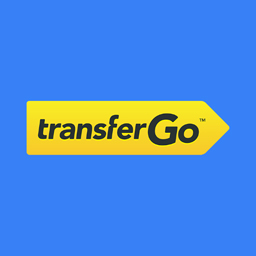 Visit TransferGo
Visit TransferGo
Used By: 2,500,000
Currencies Available: 39
Transfer Fees: 0.5%-1.5%
Payment Methods: Bank transfer, debit card, credit card
iOS App : yes, Android App : yes
LiveChat: yes
Min Transfer: 1.5 GBP
Max Transfer: 1000000 GBP
Year Founded: 2012
 Visit Moneycorp
Visit Moneycorp
Used By: 15000000
Currencies Available: 161
Transfer Fees: none
Payment Methods: debit card via our online platform or a wire transfer, cash
iOS App : yes, Android App : yes
LiveChat:
Min Transfer: 50 USD/GBP/EUR
Max Transfer: none
Year Founded: 1962
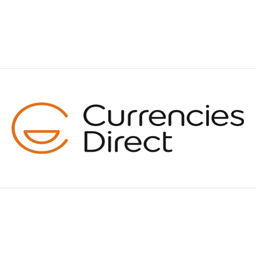 Visit Currencies Direct
Visit Currencies Direct
Used By: 325,000
Currencies Available: 22
Transfer Fees: none
Payment Methods: Bank transfer, debit card
iOS App : yes, Android App : yes
LiveChat: yes
Min Transfer: none
Max Transfer: 25000 GBP
Year Founded: 1995
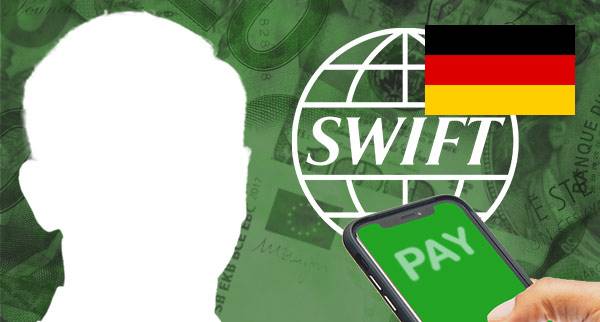
German SWIFT transfers are processed through an intermediary bank in Germany. These intermediaries are places where two banks have commercial accounts. For example, if Adams bank wants to transfer money to Isabellas bank, it sends a German SWIFT message to the German sendee Bank . The sender Bank in Germany then finds the appropriate intermediary bank and posts the payment to Isabella. The process takes 3-5 business days in Germany in most cases, and may involve fees including currency conversion fees if converting EUR or any other currencies in Germany.
The costs associated with sending money through German SWIFT are significant, especially if the amount of money being transferred from Germany is small. This is because the intermediary banks in Germany levy their own fees. Most German banks, however, allow the German or international recipient to pay these fees. The amount of money sent and received can vary greatly between German and international banks, and German banks are not always willing to provide guidance on timing. That's unfortunate, but if you are sending money internationally from Germany, you will want to be sure to consider all of the costs before choosing a German SWIFT service provider.
To send a German SWIFT transfer, you will need the following information. The name and address of the recipient you are sending money too from Germany, along with their bank account number and currency, are all needed to complete the German SWIFT money transfer. The bank account number, or IBAN, will depend on the destination country outside of Germany. You can also use a German SWIFT code to identify the bank if transfering domestically in Germany. Once you have these two pieces of information, you are ready to send the funds from Germany using SWIFT.
You will also need the German SWIFT code of the recipient. This code will identify the German or international bank account of the recipient. You can find the German SWIFT code of the recipient's bank by consulting your recipient's German or international bank directly. Alternatively, you can use an online German SWIFT code finder. After you have located the German SWIFT code, you will need the recipient's account and sort code information, before sending money from Germany.
To transfer money internationally using SWIFT in Germany, you will need to pay a German SWIFT transfer fee. In most cases, the German bank will charge you a percentage of the amount of the payment. The cost of sending money through German SWIFT depends on the destination country and the exchange rate. The more German intermediary banks there are, the higher the cost, the longer it takes to receive money from Germany, and the greater the risk. Because German SWIFT is a cooperative society owned by member banks internationally and in Germany, members are required to pay a one-time membership fee and a small annual fee.
Once you send a German SWIFT payment, it will travel through a network of German and worldwide banks. Once it arrives at its first correspondent bank, the details German money transfer details are reviewed, processed, and deposited into the recipient's bank account in or outside Germany. The entire process usually takes two to five working days, depending on the bank's cooperative nature to banks in Germany. To make German SWIFT transfers faster, you can use the paid German SWIFT acceleration service. You can send and receive your money in just a few days, but the process is a little slower than other payment methods available online in Germany.
With the recent rise in cyberattacks in Germany, the financial industry has become more concerned about the security of sending payments from Germany. While German SWIFT payments are largely secure, payment networks in Germany can have many links, creating opportunities for fraud or corruption. To help make German payments more secure, the German SWIFT organization has instituted security controls and fraud prevention functionality. These measures are effective in reducing the risk of fraud for German money transfers.
To make a German SWIFT payment, a financially regulated bank must be involved in the money transaction in Germany. This middleman is the correspondent bank in or outside Germany, which must maintain a commercial relationship with the recipient financial institution in or outside Germany. Third-party services cost additional fees and add to the SWIFT money transfer processing time, when sending money from Germany. Additionally, the more intermediary banks there are, the more expensive the German money transaction is. Since German SWIFT is used by more than 11,000 organizations in more than 200 countries including Germany, it can be used to transfer money between nearly any two countries.
SWIFT transfer fees in Germany are usually 3-4% of the transfered amount. There are outgoing and incoming SWIFT transfer fees in Germany, a German currency conversion fee, and a German SWIFT tracing fee. The German SWIFT system is used by the most trusted financial institutions all over the world. If you send money through a German bank, it will almost certainly go through the German SWIFT network in Germany. However, if you transfer money through a third party without a German bank, you might still go through the SWIFT network in Germany. some international banks outside Germany are notorious for slow deliveries and high fees, but some companies offer a safer way to transfer German funds internationally.
You can save money in Germany by completing repeating wire transfers. For example, if you send money to the same destination every few weeks from Germany, you can sign up for a frequent money sender account in Germany. Alternatively, you can also opt to send money through online banking in Germany. But German residents must remember to keep in mind that you may pay more if you do this over the phone in Germany.
A German SWIFT code is an eight to eleven-digit alphanumeric code used by financial institutions both in Germany and internationally to identify bank and money accounts to their German owners. It is assigned according to an algorithm based on three parts in Germany: the institution, country, and local location. If more than one bank branch exists within a certain area, the 11-character code will be used to designate the specific branch that you are sending money to from Germany.
If you have ever received a German SWIFT code, you probably have a BIC. A BIC is another acronym for Business Identifier Codes in Germany, and these codes are often used for German bank transfers internationally. In fact, they are so widely used, they're used interchangeably. Thankfully, German SWIFT codes have become an essential tool in today's modern world. For German residents who have never used the German SWIFT system, it is simple and easy to get started.
If you have ever tried to send a large sum of money in Germany from one country to another, you have probably heard of German SWIFT. This service is based on a system that identifies accounts and customers on the German and global bank messaging network. Each client is assigned a unique German SWIFT code. The benefits of using this system over other methods is its speed and that it is safer than other international money transfer methods available in Germany.
German SWIFT is not free. To send or receive money, big banks charge about 3% to 5% of the amount being transferred FROM Germany. Because the exchange rate depends on the amount being transferred, this fee can become a significant factor TO German money senders. One of the main advantages of German SWIFT is its high safety. While other systems have limitations in the currencies they can send and receive, German SWIFT has no such limits. Even though German SWIFT is widely used, it is still important to know that the amount of money you can send and receive will be regulated by the laws of Germany and the country you are sending too. some countries outside Germany have sending limits of 5000 EUR.
Although the benefits of German SWIFT are many, you may be wondering what the drawbacks are in Germany. Despite being among the most popular methods of foreign payments in Germany, the system is not without drawbacks. First, it costs quite a bit of money for German people to send money using SWIFT. This commission amount when sending money from Germany, includes the services of the German sending bank and those of the financial institutions involved. In addition, the number of intermediaries involved in a transaction increases the cost to German senders, which SWIFT calculate before sending the money from your account in Germany.
The biggest advantage of using the German SWIFT system is its speed and safety. SWIFT is good for sending large amounts of money, as the SWIFT banking is highly regulated and monitored. For smaller transfers of under 500 EUR, other online money transfer systems are a better option for German clients. This is because each international money transfer system available in Germany operates with its own tariff network, which is dependent on the destination country outside of Germany and the currency of the transaction.
German SWIFT works by offering a centralized store-and-forward mechanism and some transaction management. The German sender bank A formats a German money transaction message according to specific standards and sends it securely using the SWIFT network in Germany. The German SWIFT netword then makes sure that it reaches its destination bank in or outside Germany, in a secure and reliable manner. The German SWIFT network uses high-grade hardware and software in Germany and all over the world to guarantee that tranactional messages from the money sender in Germany are secure and authentic. To make sure that messages are sent and received in a secure manner, the German and international banks tie their BIC codes to each other.
To make international money transfers faster from Germany, German SWIFT works as an intermediary bank between two banks. The intermediary bank facilitates the transfer of money, which is why it costs a fee to German clients. Aside from the intermediary bank, the German SWIFT network also allows for currency exchange, allowing for more efficient international money transfers. Using standardized IBAN (International Bank Account Number) codes, German SWIFT is essential to international payments in Germany.
German SWIFT Payments allows banks to send money to almost any bank in the world not just banks in Germany. Imagine that a company needs to send 100,000 EUR or other currency to a supplier in another country. They would instruct their German bank to transfer the money using the correct currency from Germany to the recieving supplier in another country. They would give the bank their German SWIFT code, the beneficiary's name, and the amount they wish to transfer. This would send a secure payment in a matter of seconds, that is fully processed in 1-5 days from Germany.
The answer varies by German and international bank, but it is important to understand the details of the transfer process in Germany using SWIFT. In general, German SWIFT transfers take two to five business days. While a German SWIFT payment may seem instantaneous, it takes time to complete because it needs to be processed through multiple intermediaries in Germany and all over the world.
German SWIFT is an international payment system that has become the dominant way to send and receive money for German residents, in over 200 countries worldwide. German SWIFT payments generally take one to five business days to complete, but this can be extended by fraud prevention procedures with German and international intermediary banks involved. So it is important to check your destination's German SWIFT payment history before you send money overseas.
Since the 1970s, the phrase "wire transfer" in Germany has been used to describe to the processes that may be utilized to move money from one account to another, whether those accounts are located locally in Germany or worldwide. SWIFT transfers only decribe moving money using the SWIFT network in and outside on Germany.
A German SWIFT transfer is a secure payment method that allows funds to move from one bank to another without requiring a middle-man. The sender initiates the German SWIFT transaction, providing bank account information to the receiving bank and confirming payment from the German sendee. The transfer can take a few hours or a few days, depending on how far the money has to travel outside of Germany.
You can perform a bank transfer using SWIFT online or in a bank branch in Germany. You will need to verify your German ID, and have the SWIFT transfer reciepiants name, address and bank info. German clients have been using SWIFT as a international payment network that facilitates secure international wire transfers in Germany for many decades. The German SWIFT payment network allows German banks to send and receive payments worldwide. Banks send messages using the German SWIFT system, which enables them to instantly identify one another. The German SWIFT network unites more than 8000 institutions in 208 countries. German SWIFT acts as a middleman in banking, stock and brokerage transactions.
You can choose the SWIFT method of payment you prefer. Banks charge a fee for German SWIFT transfers in Germany, but there are some services that may offer more competitive money transfer fees in Germany online. Its important to know how much of your German money transfer using SWIFT disapears to fees. Knowing your currency conversion and transfer fees in Germany , make it easier to predict how much money your recipient will get. The biggest cost for German SWIFT transfers is the exchange rate. Since German SWIFT transactions involve multiple intermediary banks, they can take two to five days. The efficiency of the German SWIFT payment depends on the cooperation of the correspondent banks.
If you are looking to transfer money internationally from Germany, you should know that there are some limitations to German SWIFT transfers. These include the length of the transfer, the exchange rate when converting EUR or any other currency, and the cost of the intermediary bank fees in or outside Germany. Some money transfer companies do not charge any fees at all on some transfers if both the German sender and recipient use the same money service. Other money companies in Germany will charge you a nominal fee to use their services. Ultimately, the cost of German SWIFT transfers comes down to the exchange rate. These are not standardized and German banks tend to choose the worse exchange rate for the transfer.
If you are using the SWIFT protocol in Germany, you will need a correspondent bank with a commercial relationship between the German sending and receiving banks. This third-party service will cost you extra and delay the payment in or outside Germany. Since German SWIFT is a cooperative society owned by members, the cost is low. The annual fee varies by member class. You should look for a financial institution with a branch in Germany to make a money transfer.
German SWIFT transfer senders have the ability to seek a trace on your transaction in or outside Germany by entering the SWIFT code associated with your German bank in the event that your transfer is not delivered on time. A SWIFT identification number is required for a German bank to send a wire transfer, and it is the same number that is required for the German bank to sign off on other types of transactions. Your German bank may charge a fee for SWIFT transfer tracing in Germany.
Although German SWIFT payments are highly secure and reliable, it is easy to track one of these transfers. Because the German SWIFT network is comprised of thousands of German and international banks, the banks that make up the SWIFT banking network are all required to provide regular updates on payment activity in Germany.
The process of international money transfers relies on the German SWIFT network. Banks from different countries exchange currency via this system. These banks exchange money using their commercial accounts. The banks that accept German SWIFT money transfers charge a fee for this service. However, if you are not a bank, there is no need to worry. You can simply follow the German SWIFT code for a specific transaction and see when it was sent.
The German SWIFT code is an eight to 11-character code assigned to each financial institution. This code is assigned by German SWIFT to facilitate international payments. This code is unique to that institution in Germany, and is also commonly referred to as the IBAN or Bank Identifier Code. Some German banks automatically list this code on your statements, but you may be able to find it on your own by visiting your official banks website in Germany.
Once you have created your account in Germany and set up your preferences, the next step is to set up your German SWIFT credentials. Your German account credentials are created with your banking institution in Germany. Once you have gotten your account, go into the "Add Funds" section and paste in the German SWIFT code of your bank. You will need to provide your Beneficiary Account name, IBAN, and German SWIFT code, or German SWIFT code. You may be asked to provide a PIN code that is sent to your phone in Germany, via txt message.
German SWIFT money services make Their money by charging German clients based on amount of money sent and currency conversion fees. The charges are determined by the volume of German SWIFT usage and commercial policies of the German and international banks involved. Additionally, German SWIFT money transfers can be more expensive than some online money transfer sites in Germany. Most money transfer fees in Germany come when money is converted into the target currency. So you will probably be able to find a better currency exchange rate than your German SWIFT bank.
German Currency exchange rates vary greatly from provider to provider in Germany. While zero-transfer-fee currency exchange providers tend to offer lower exchange rates in Germany, you may end up paying more in fees. Some providers have a zero-transfer-fee policy on certain transactions in Germany, that allows you to transfer more money. It is better to choose a money transfer service with a lower exchange rate in Germany, that supports sending money to your recipients country.
When comparing transfer rates in Germany, be sure to check what the exchange rate is for the currency you are sending from Germany. Converting EUR to another currency can be costly, if you dont check. Every transfer service has slightly different exchange rates for residents in Germany. Always compare the exchange rates against a standard rate, againt your EUR before deciding which one is the most affordable in Germany. A simple currency converter is available on Google, or on many of the best money transfer sites available online to German clients in Germany. You will have to know the local currency of the country you are sending to outside of Germany.
We list reviews for the best money transfer services for sending money to Germany you can check out some of the best Germany money services below.
If you would like to see XE Money Transfer compared against some of the best XE Money Transfer alternative Germany money tranfer services available right now you can do so by clicking on the links below.